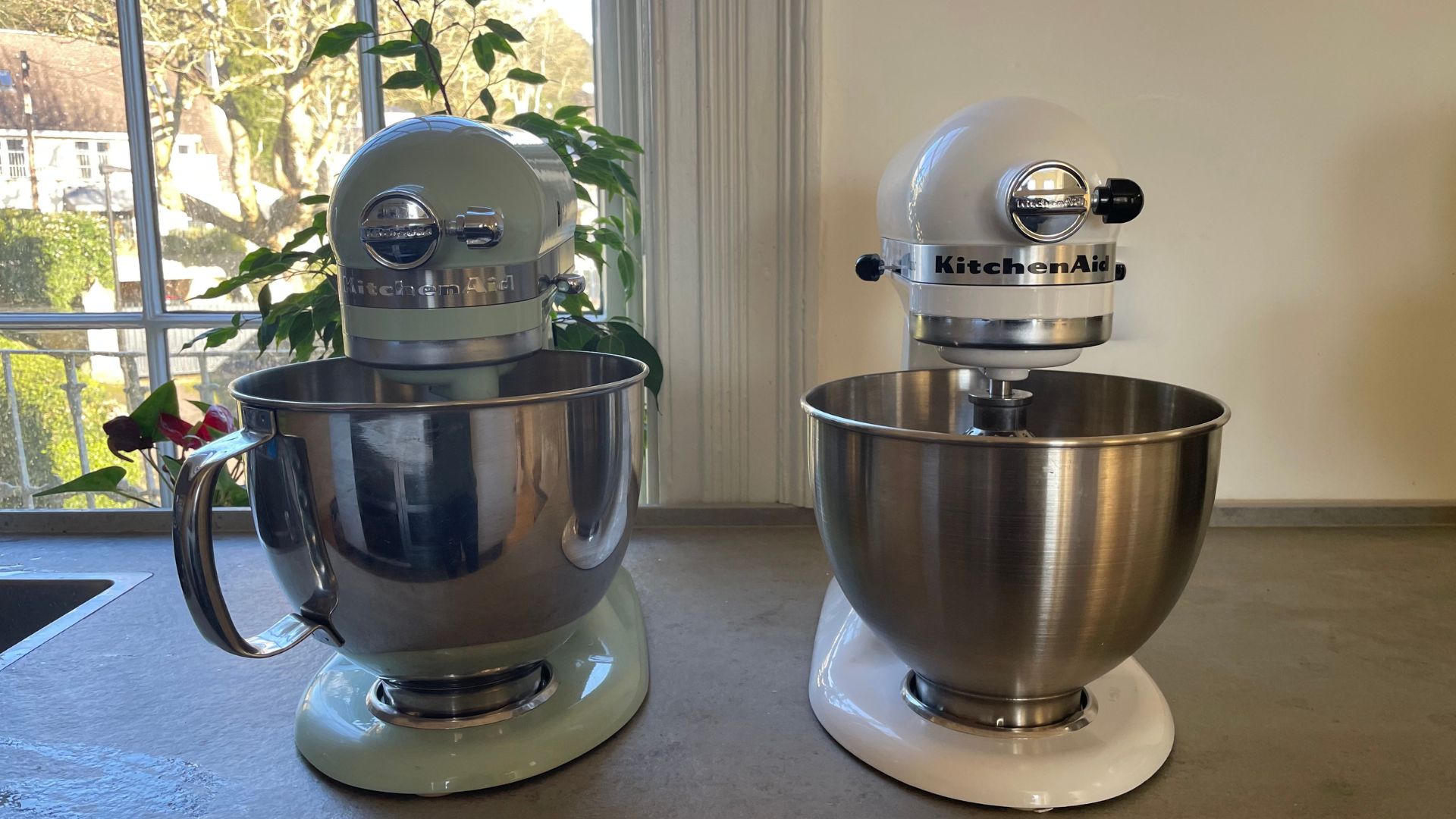
If you’re choosing a stand mixer, let’s face it, you’re probably hoping that it’ll end up being a KitchenAid. Their iconic design comes with a good dose of prestige, heritage, and promise — but which KitchenAid do you need? And what's the difference between a KitchenAid Artisan and a Classic?
One of the best stand mixers of all time, the KitchenAid Artisan has topped the charts since its launch in 2012. The Artisan is available in over twenty different colours; the 325-watt motor is powerful; and the 4.8-litre bowl (on the tilt-head model) is perfect for family homes. However, the KitchenAid Classic, for all intents and purposes looks almost identical. It's a different colour (only available in white or black) and 50 watts less powerful, but you'll save £50.
It seems like a pretty appealing alternative for those who are looking for a KitchenAid deal, so I created a head-to-head. In my kitchen, I played out the KitchenAid Artisan vs Classic to really delve into which you should buy. Here's everything you need to know,
An overview of the differences
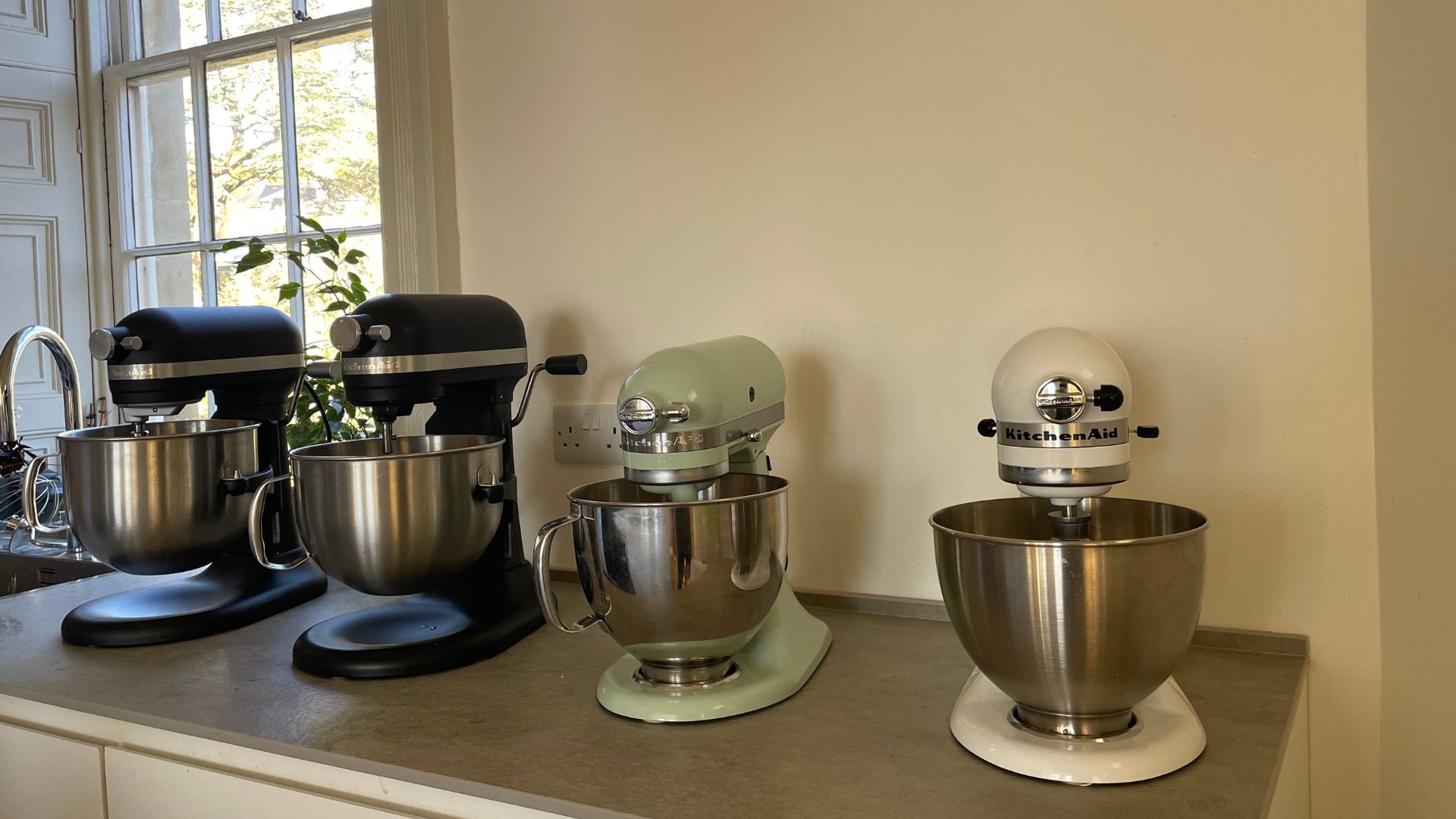
To help you work out what matters to you, I’ll give a quick summary of where the differences between the KitchenAid Artisan and Classic lie. Firstly, if you Google KitchenAid Artisan, you'll see that this is the blanket name for two different types of stand mixer, a bowl-lift and a tilt-head (the Classic is only available as the latter).
I've dedicated an article to the differences between the bowl-lift and tilt-head stand mixers because that's a debate for another day. In summary, bowl-lift stand mixers are more powerful, often bigger, and so they suit more serious, borderline commercial bakers. For this comparison, I'm choosing like-for-like and comparing the two tilt-head models, but I will point out the extra bowl-lift information where it's relevant.
The KitchenAid Artisan Tilt-Head Stand Mixer has more of a range of colours, more accessories that come by default, and some performance differences. Is it enough to warrant an extra £50? I’ve made a section for each one, so let’s take a look in more detail.
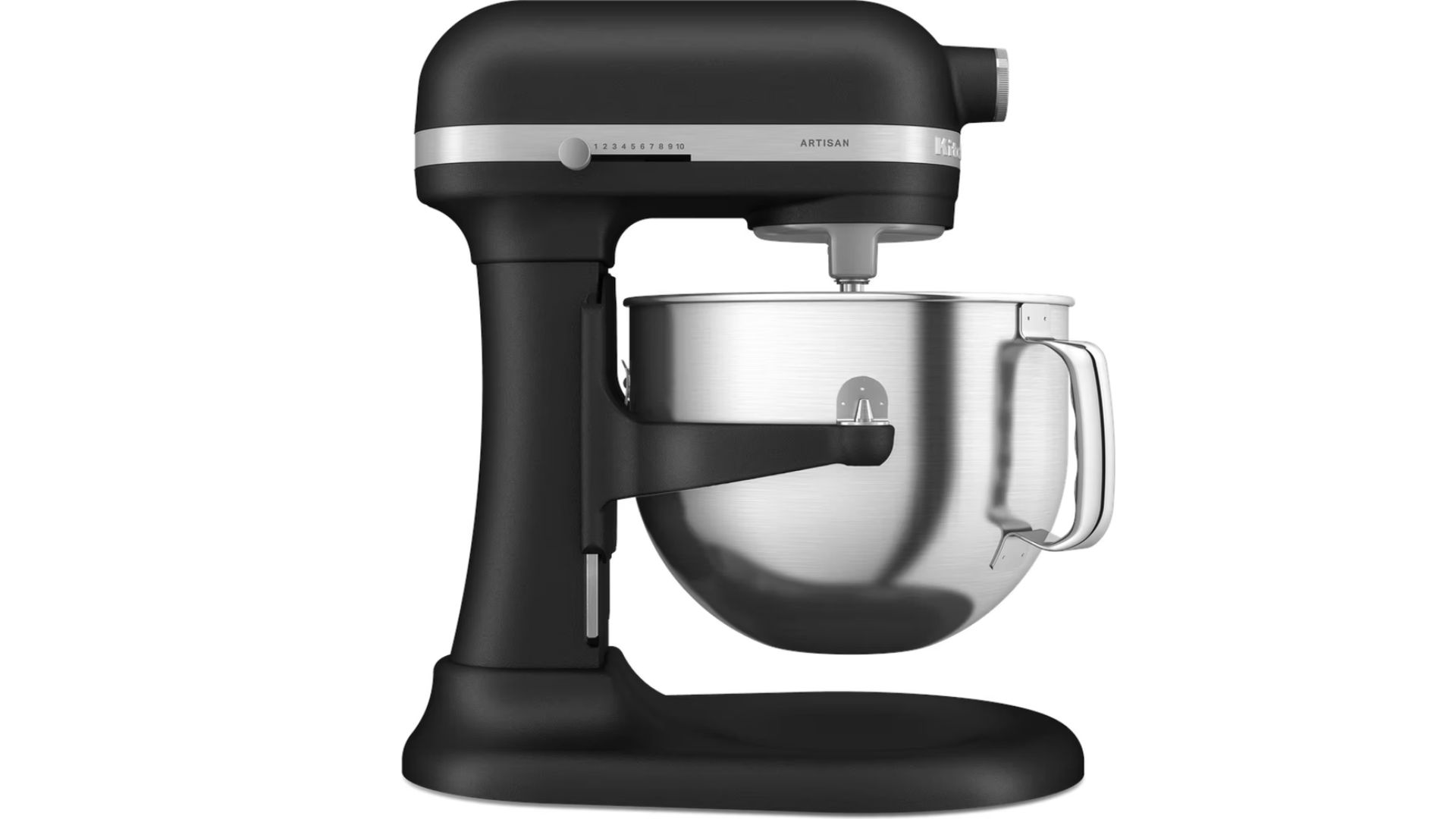
The bowl-lift mechanism is what sets this apart from the rest. It's bigger and heavier, but that means that it can handle tougher bakes and bigger tasks. It's one for the GBBO contestants.
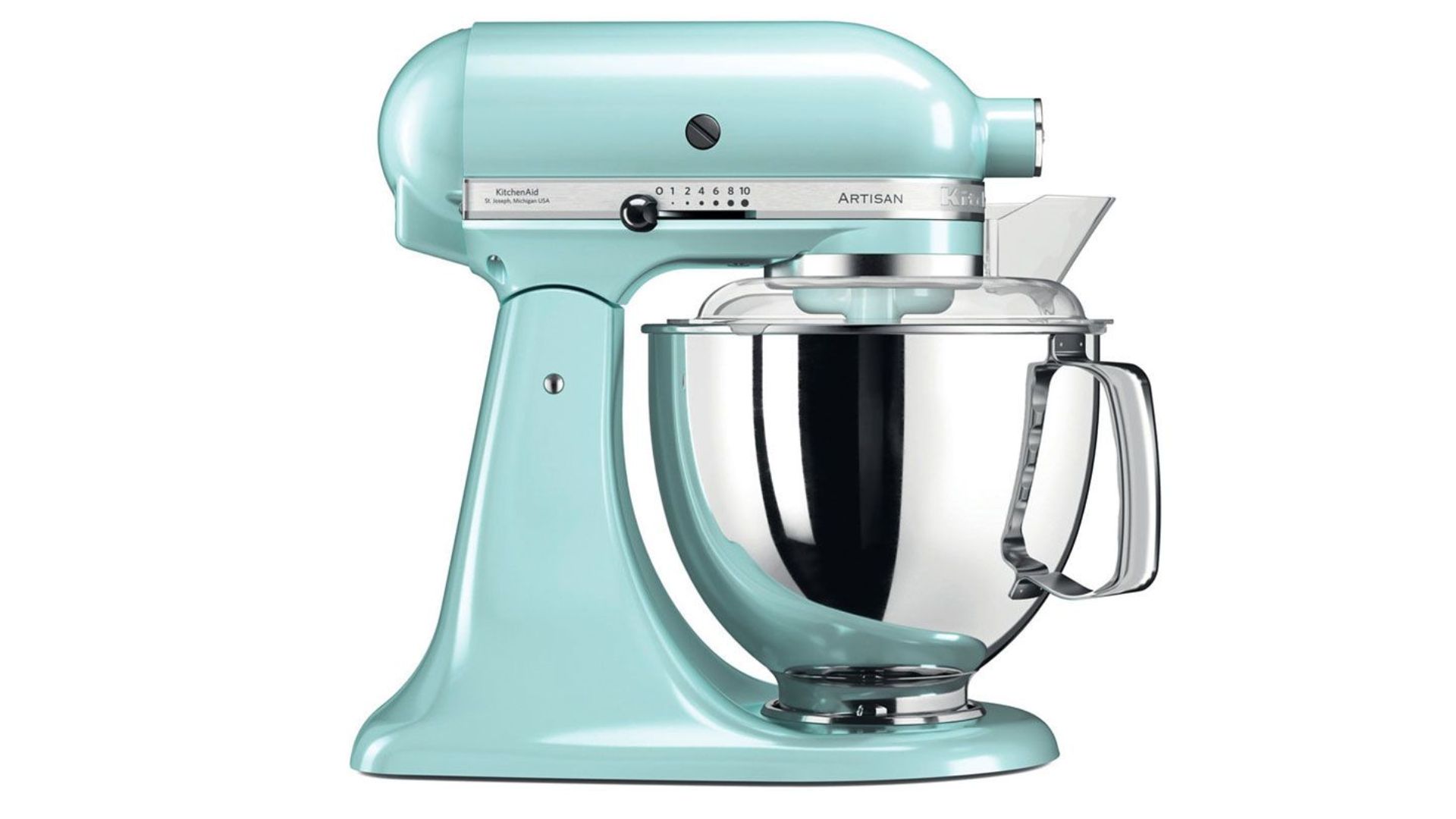
The Artisan Tilt-Head Stand Mixer offers the most colour options than the Classic, so it's perfect for brightening up the kitchen. You'll also get a handle on the bowl, a pouring shield, and an extra 50 watts of power.
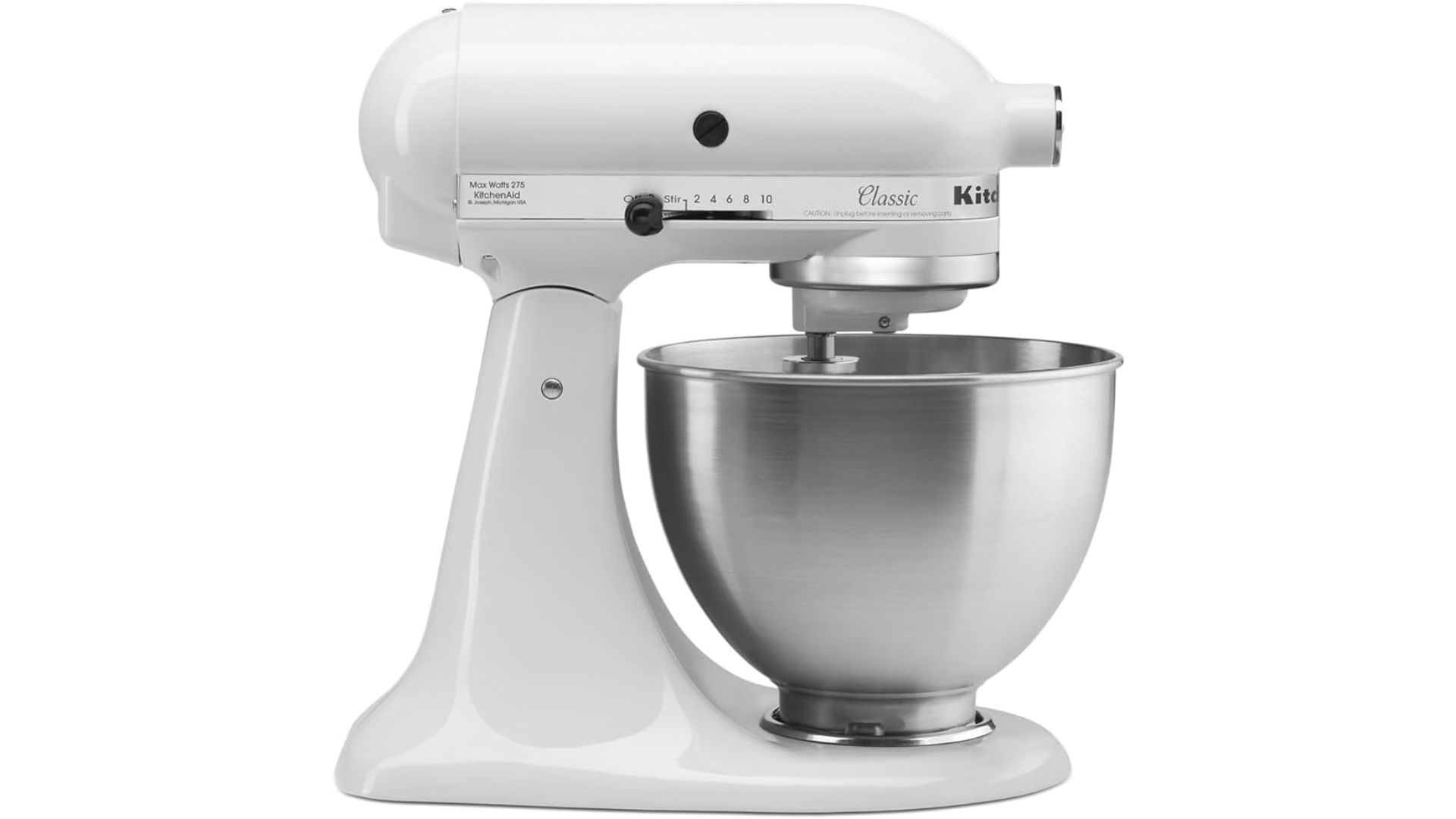
This is the cheapest KitchenAid, by £50 and you don't really compromise. It's available in only black, white, and silver and the 275-watt motor does a fabulous job on all of your classic kitchen tasks.
Practical differences - power, size, and speed
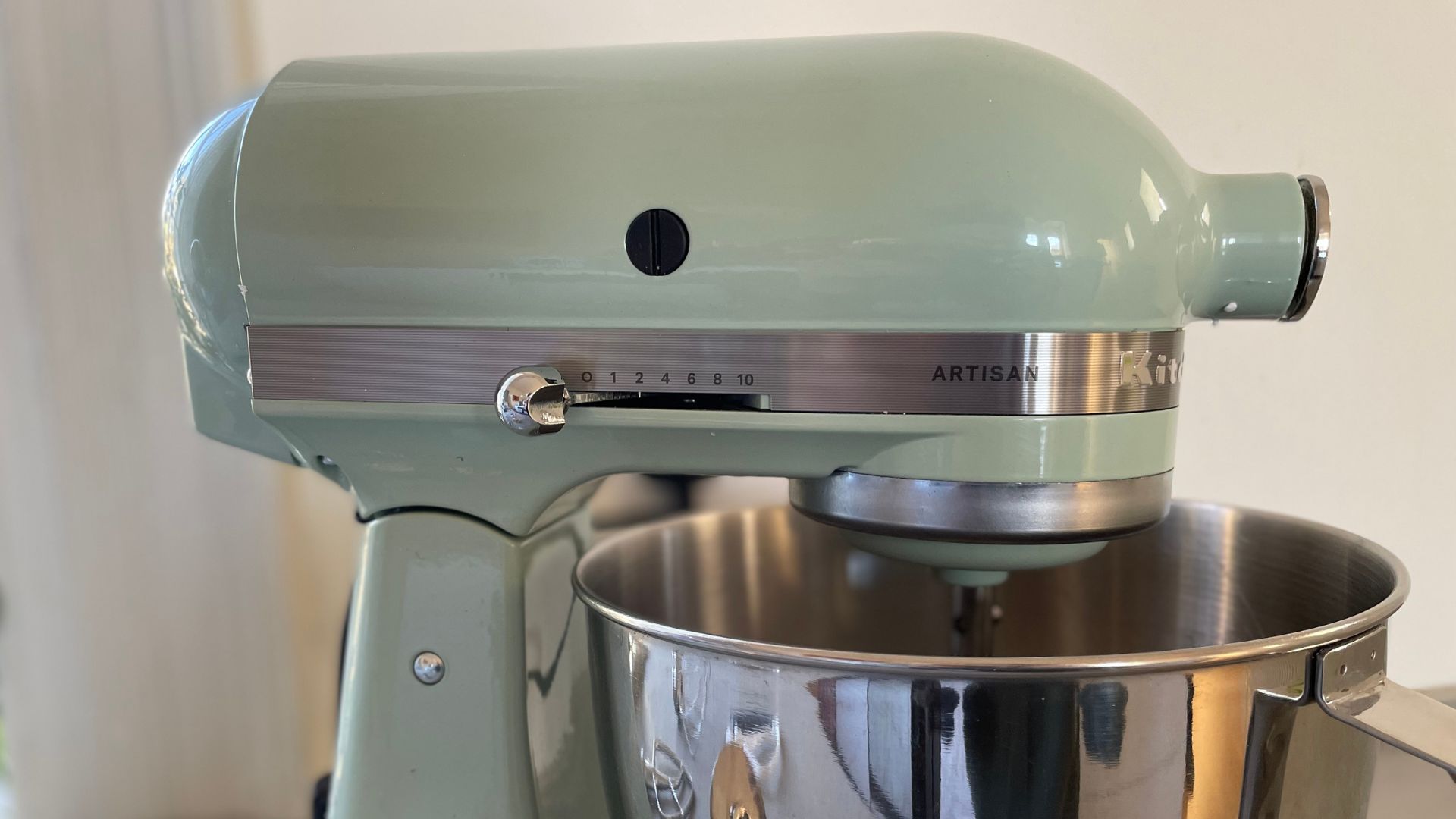
Whilst I’m all for things looking nice — and colour definitely falls into that category — we have to put the practicalities first and that means taking a look at the differences in performance.
The best place to start is with power. The Artisan’s motor offers 325 watts, whereas the Classic has a more modest 275 watts of power behind it. For all of my basic tests — kneading bread dough, mixing cake mix, and whipping cream — I couldn’t tell that there was any difference in the motor power. In my notes, the Artisan, at full speed whipped cream 14 seconds faster than the Classic. That's actually a surprising difference, but it's not one that I noticed until I checked my spreadsheet, so I don't think you'll notice it on a day-to-day basis.
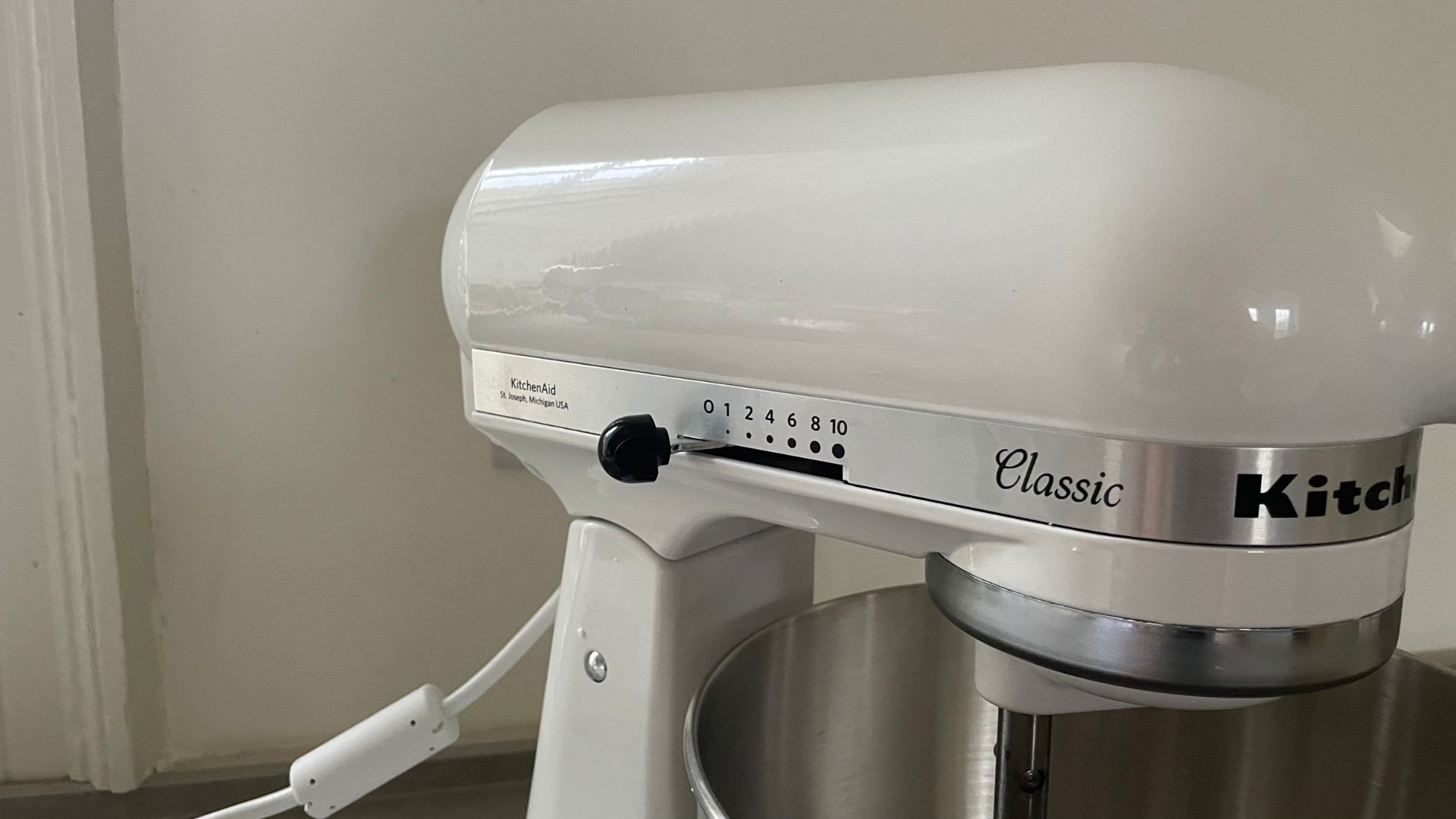
The people for whom the extra power actually matters are more ambitious bakers. If you know you’ll be taking on tougher tasks with your KitchenAid, such as low-hydration bread doughs and thick cookie mixes, you might want to splurge on a little more power. I don't think you'd notice the extra of 50 watts in your Artisan, but what is obvious is the lack of them in the Classic. It'll whirr and whine and judder a little more when it's struggling to push through your pizza dough. That's not quite the luxury KitchenAid experience that you might have dreamed up.
That being said, if power is something that really concerns you, the Artisan Bowl-LIft should be on your list to look at. It's still a 325-watt motor, but the base is weighted, so it'll sit more steadily on your counter, rather than running the risk of tipping or jumping around when it's working. This doesn't happen often, by the way, it's just on tricky tasks.
For the Tilt-Head models, both Classic and Artisan, you’ll still get the same speed increments. Although, I felt that the Classic jumps more when it starts. The Artisan rarely knocked flour over my counter, whereas the Classic created a cloud every time it started, even though both supposedly start on the same setting.
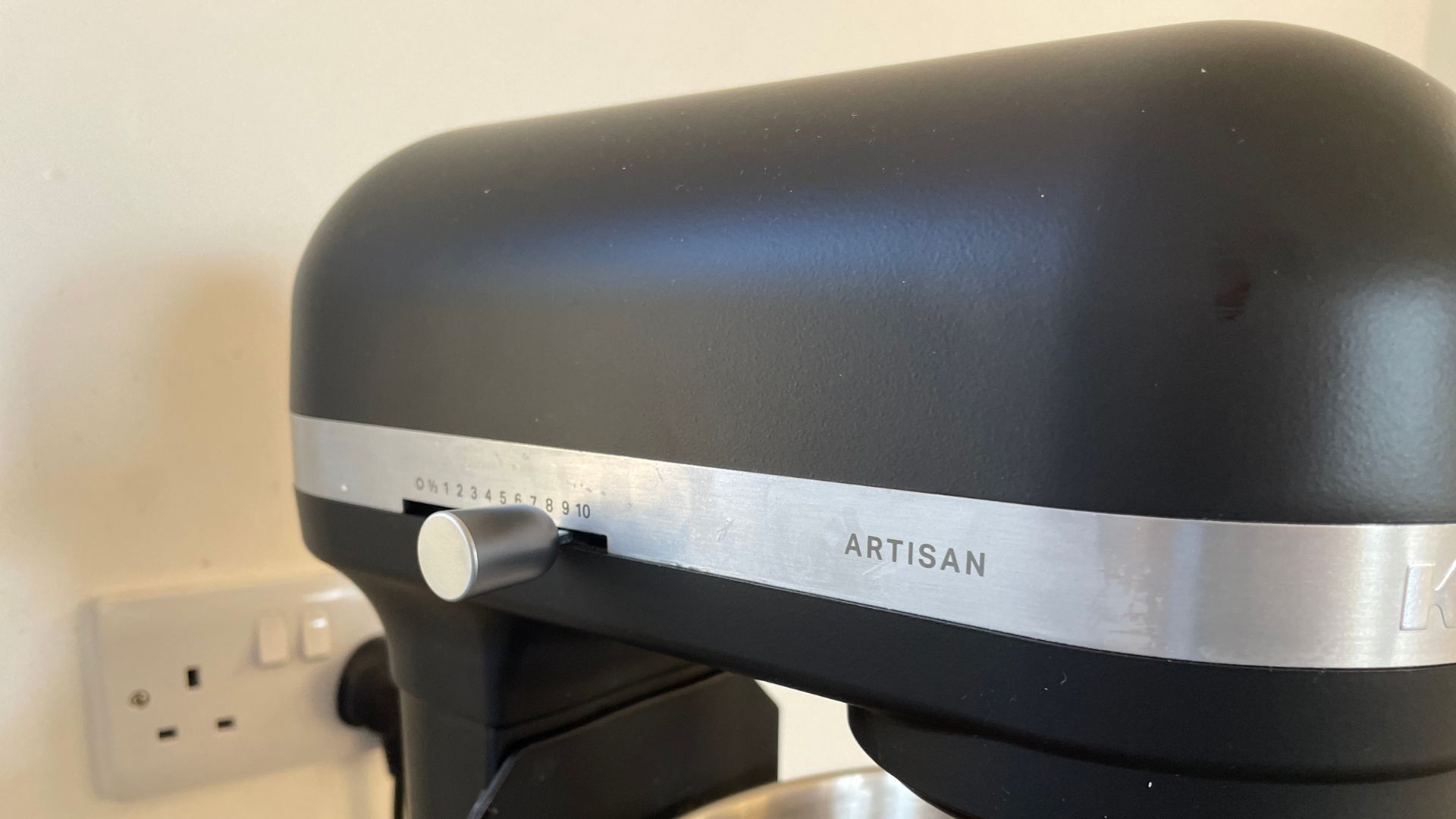
The KitchenAid Artisan Bowl-Lift comes with an extra half-speed setting that mimics hand mixing. I've folded whisked egg whites into flour and mixed blueberries into cupcakes with this and it's seriously impressive. Hardly any stand mixers have a speed setting this delicate. Even better, rather than the speed jumping by two each time, it only jumps by one, so you get much more control over the speed of your attachments. It's a niche, but if the sound of that excites you, you're probably the perfect person for it.
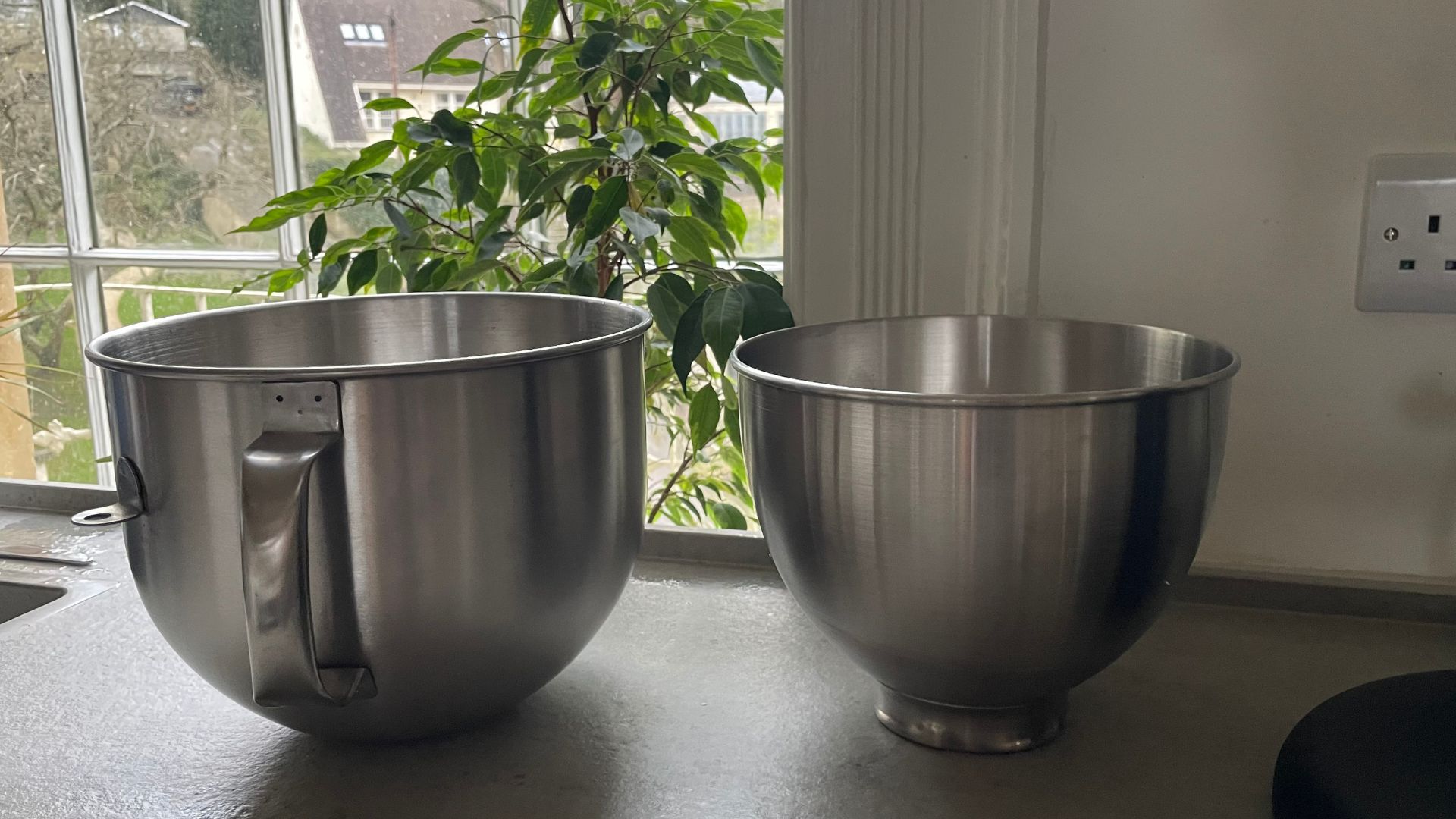
Whilst we’re looking at the numbers, there’s also a slight capacity difference. The Artisan’s bowl is just a touch bigger (4.8 litres compared to 4.3 litres) and it’ll come with a handle too. In practice, this is about enough for 1-2 extra pizza bases, six more cupcakes, or 12 more cookies. The extra 500ml is handy, but not essential.
On the other hand(le) — sorry — the way that you hold the bowl makes a big difference. The large handle on the Artisan makes pouring, scooping, and moving the bowl around a lot less risky. Keeping a firm grip on the bowl becomes a one-handed job, so you can have a spatula in the other, rather than a two-hand and two-person job.
The Artisan's bowl is also made from brushed stainless steel rather than normal stainless steel, but this is an issue for the aesthetic section. And, if it bothers you, KitchenAid sells alternative glass, steel, ceramic, and copper bowls for both designs. Here are some of my favourites:
Are the attachments and accessories any different?
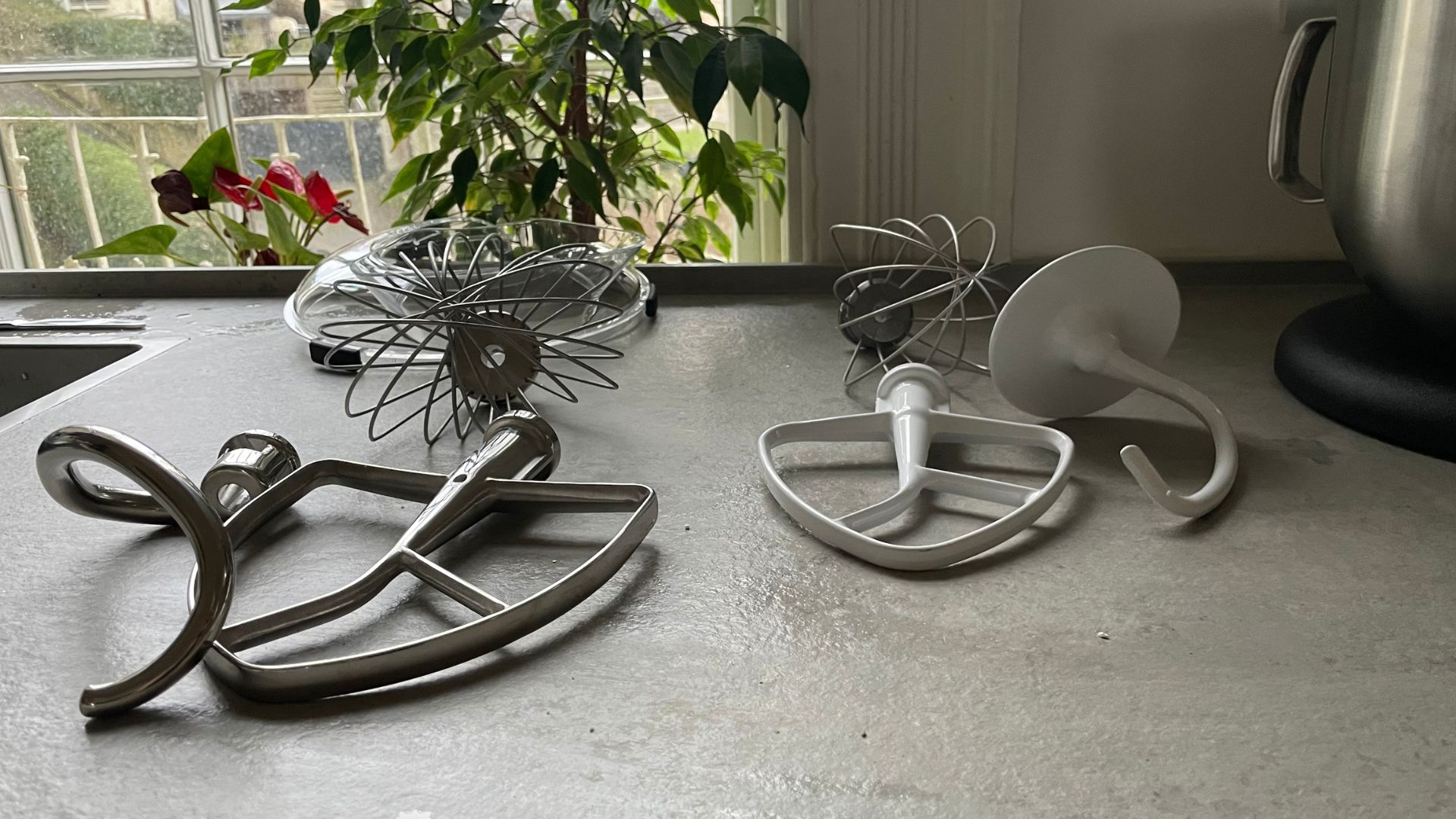
The image above slightly exaggerates the difference between the Artisan and Classic Attachments, because the Artisan's are for a 6.6-litre bowl and not a 4.3-litre bowl. You can see that both stand mixers come kitted out with a flat beater, dough hook, and wire whip. These both feel robust and premium, even though the Classic's are coated in white, they're still weighty.
The only difference is that the 4.8-litre Artisan Stand Mixers come with a pouring shield (if you peer to the back of the photo, on the left, you'll see it. This can be fitted onto your stand mixer or removed, as you wish. It's handy for keeping your surfaces clean, but I actually do a lot of my testing without it, so I don't think you're missing out by not having one on the classic.
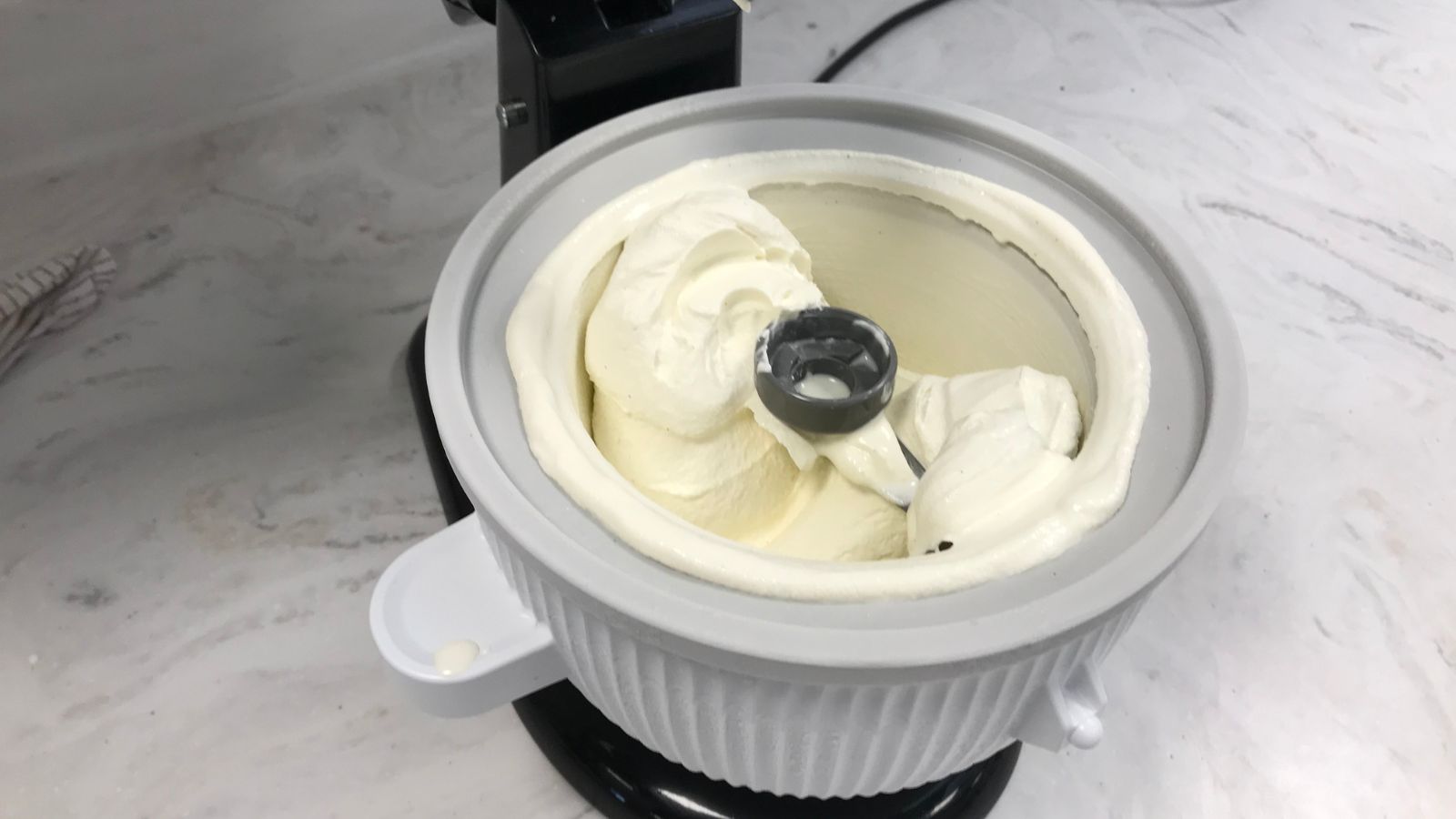
This is like a sub-sub section of the practicalities, so I've put it in front of aesthetics. It's also one of the things that I'm asked the most about when it comes to KitchenAid. The most popular question of all is "do KitchenAid attachments work for old and new stand mixers?"
The official line from the KitchenAid site is “All KitchenAid brand hub attachments fit every stand mixer model.” So, you’re safe to buy second-hand, older models if you want to. The only one you'll need to check on is the KitchenAid Artisan Mini, which the brand no longer sells. If you've picked up one of these on eBay, you'll need to consult KitchenAid's list of which attachments are compatible with which stand mixers.
The next piece of good news is my answer to the most popular question “can a KitchenAid Classic work with Artisan attachments?” Yes, it can. As I mentioned with the Artisan Mini, there’s a list on the KitchenAid website if you want to check, but you should be able to slot even the newest, most whacky addition to the KitchenAid collection into whichever model you choose. Most notably, it means you can use the ice cream-making bowl, which is my personal favourite.
Aesthetic differences

I wish I could say that I’m immune to appearances; it’s what inside that’s supposed to count, right? Well, with a stand mixer, I’m afraid appearances matter. These are hefty bits of kit that you’ll probably keep on the counter full-time. That’s why KitchenAids are so popular. People recognise the silhouette and they’re impressed by the retro lump of die-cast metal that’s on your counter.
Now confession time is over, I’ll get into the details. You'll have seen in my pictures that the silhouette of the two stand mixers isn’t really that different. Dimensions-wise, they’re identical, aside from the handle on the 500ml bigger bowl over on the Artisan.
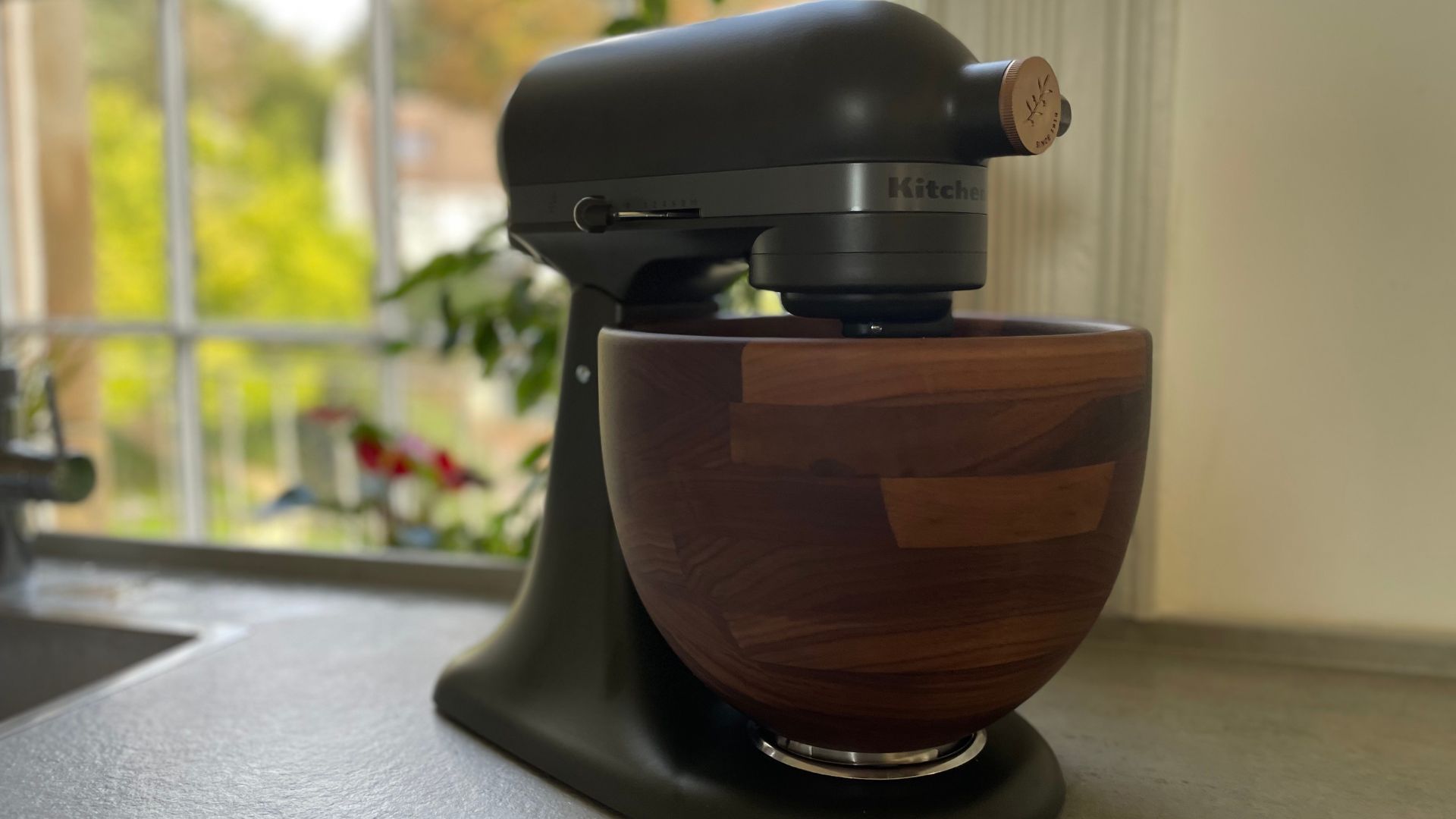
The main differences in appearance are your colour options. The Classic comes in white, black, or silver, so if you’ve got a simple, monochrome kitchen, these are perfect. That’s not a lot of choice though, especially when you take a look at the Artisan’s repertoire. Over there, you’ve got over 39 different colours, nay, shades to choose between. Want to implement the unexpected red style theory? Do it with your KitchenAid. Got a bit of a blue colour scheme? The Artisan will ask what kind of blue? They’ve got blue steel, blue velvet, aqua sky, ice, mineral water blue, light, blue salt.
And, Artisans will also be the models that KitchenAid’s Design Series special edition releases come in. This year, it was a moss green stand with a walnut wood bowl and let me tell you, it is something of a centrepiece. The brand also launches a new colour in the Artisan each year and you can pick this up in an upgraded accessory pack, which will kit out the really enthusiastic bakers.
Price differences
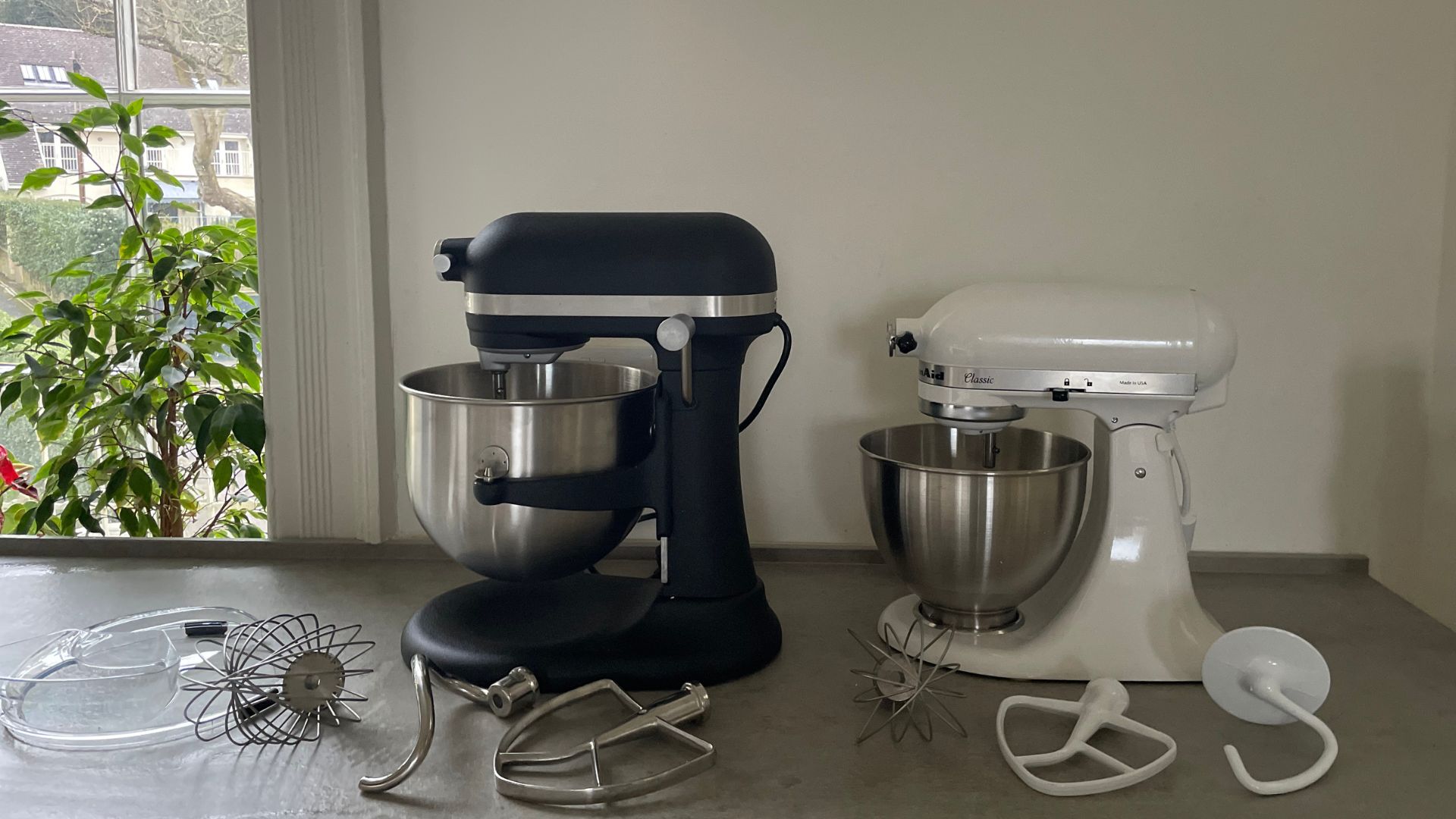
It’s inescapable that we also talk numbers here. If the Classic and the Artisan were the same price, I’d recommend the Artisan to everyone. The truth is that the Classic retails at £449 at time of writing, whereas the Artisan can be anything from £499 through to £699 (for their limited edition colour of the year stand mixer). It’s not a huge price difference, but if you’re stretching the budget to bag a KitchenAid and you’d be buying it in the Classic colour options (and you don’t need the extra power), there’s no point burning an extra £50.
My advice, if you can follow it, is to shop around for KitchenAid deal. The KitchenAid links that I include here are all reputable and reliable. They are set to pull through the best prices, but I would always shop around to see whether you can find a voucher or a sign-up offer. Even 10% off can save you another £50. Or, it can make the difference between which model you buy.
Which KitchenAid Stand Mixer should you get?

Given that the two are fundamentally more similar to each other than any other stand mixer, I don't think you can go wrong with the Artisan or the Classic. The Artisan has more power (handy for serious bakers), an extra accessory (the pouring shield), and more colour options. The bowl handle is another neat extra, but if you don't need that, you could take the £50 saving on the Classic.
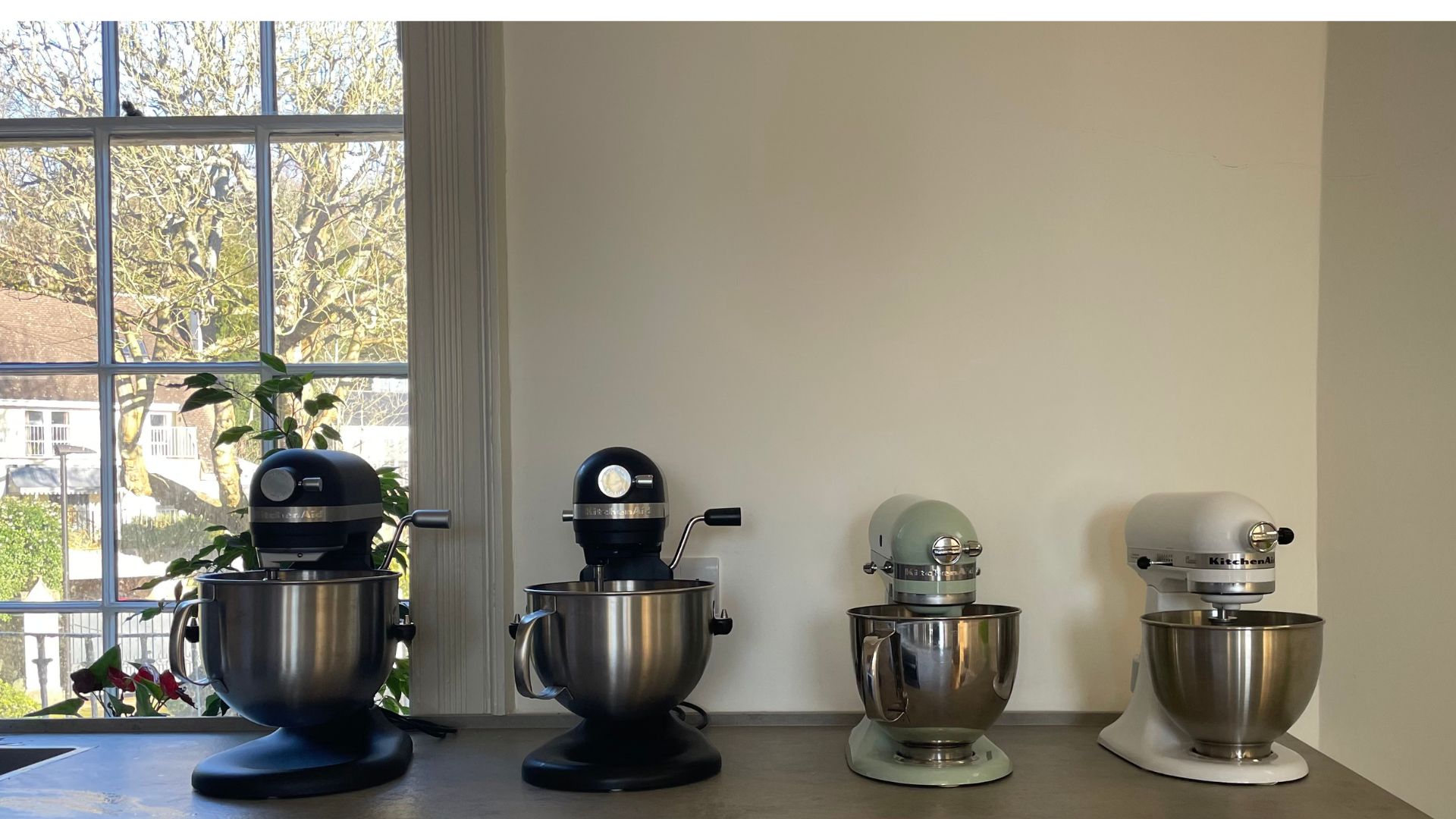
FAQs
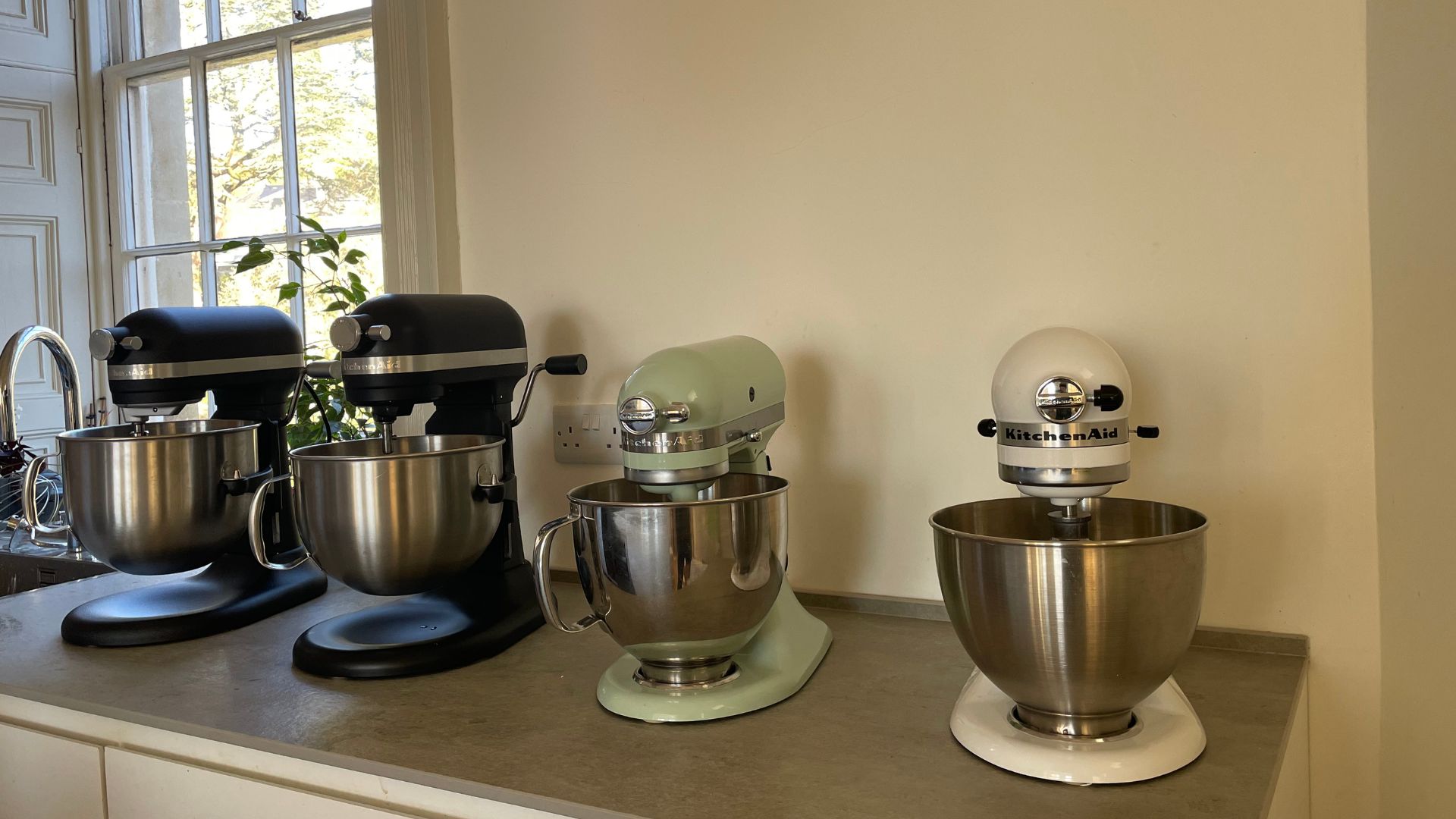
Is there any warranty difference between the Artisan and Classic KitchenAid
KitchenAid offers a 5-year warranty and 15-years repair guarantee on all of their stand mixers, so you don't lose out on whichever one you opt for.
What's the difference between a Deluxe KitchenAid and a Classic or an Artisan?
Unless you're in the US, you don't need to worry about this. The Deluxe is only sold in America and it's very similar to the Artisan and Classic. It has a polished bowl that has a handle like the Artisan, but it's a little smaller and the motor is 300 watts (which sits right in between the Classic and the Artisan(.
What are the similarities between the KitchenAid Artisan and the Classic?
The Classic and the Artisan look very similar. Their dimensions are identical, the speed increments are exactly the same (on the tilt-head models), and the accessories are interchanagble. You'll also get the same warranty for both.







